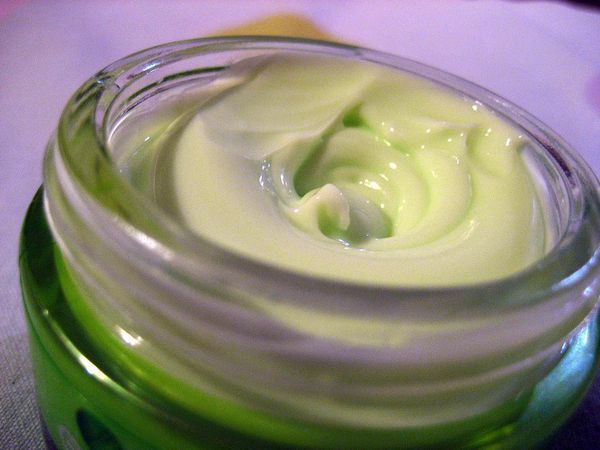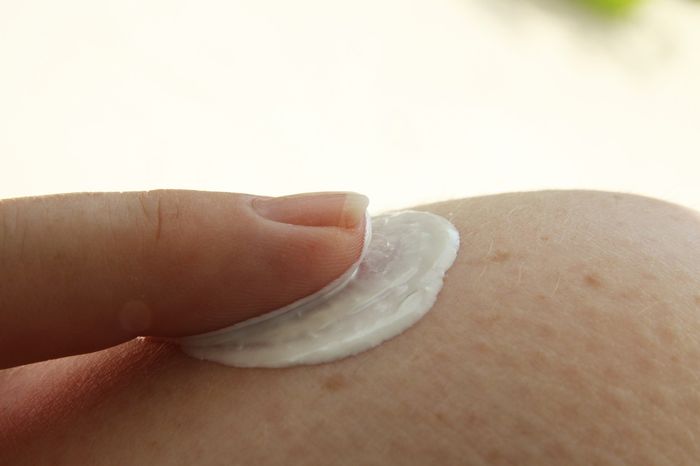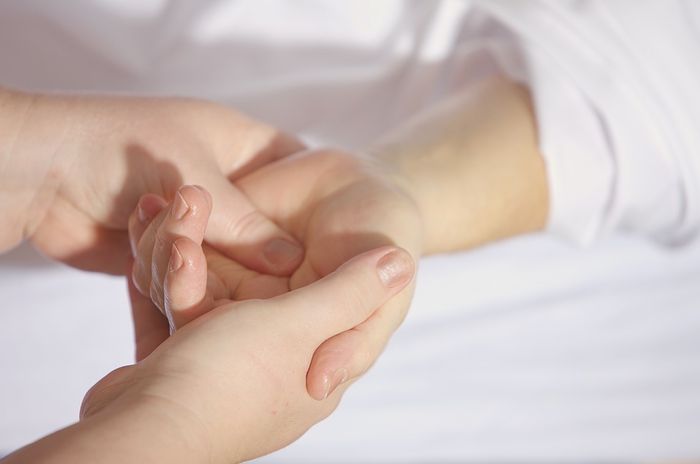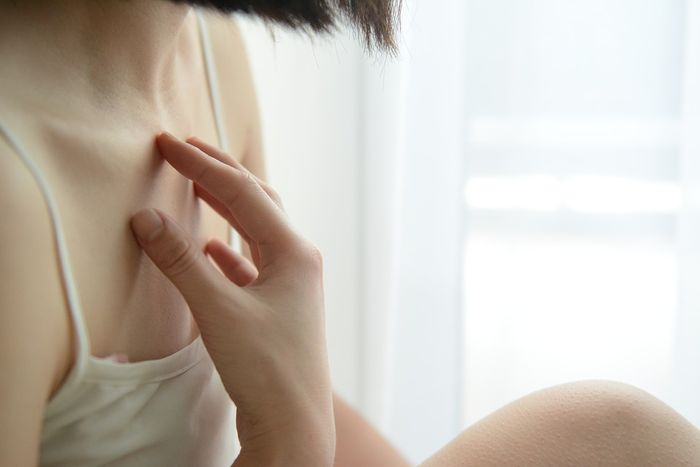- Cannabis-based creams and ointments possess a healing potential that deserves far more attention than it usually receives.
- Besides being excellent pain relievers, a number of recent studies have pointed to the antibacterial properties of these products, which are highly beneficial in the treatment of wounds — even when there is risk of infecting surrounding skin areas.
- In short, a great alternative that should be seriously considered when it comes to healing and renewing skin.

Creams, ointments, lotions, balms… Overlooked more often than not, increasingly more people are becoming aware of the benefits of medical marijuana and the many uses it allows. And while many people are still convinced that the smoked and the inhaled forms are the only ways of benefiting from it medically, actually topical cannabis dates back to time immemorial.
Several Egyptian papyri document the use of healing creams made from a mix of cannabis and fat, and there is evidence that ancient Greeks used it for treating wounds and ulcers in horses, as well as for stopping nosebleeds in humans. More recently, during the 14th-18th centuries, a number of herbalists praised their effectiveness in topical treatments - British herbalist Thomas Short, for instance, recommended using cannabis preparations for treating everything from burns to insect bites.
All this evidence has survived to this day, showing the powerful pain killing, anti-inflammatory and antiseptic effect of topical cannabis, which also speeds up skin healing and renewal thanks to its hydrating properties.
A study carried out by Canadian researchers and published in the Journal of Pain and Symptom Management early last year showed that topical cannabis could help in the treatment of wounds in cancer patients. The study presented the case of a 44-year-old man that had developed a wound on his cheek following oral cancer diagnosis and that had resorted to medical cannabis after trying all sorts of ineffective conventional treatments. Initially, he used a vaporiser to reduce the pain, but the relieve was so significant that he started to apply topical oil directly on the wound.
The patient reported improvements on wound status as well as pain relief just 10-15 minutes after application, suggesting that cannabis lipophilic compounds such as THC and CBD cannabinoids may be easily absorbed through cutaneous wounds.

However, this is not the only study to have proven the painkilling effect of cannabis in this type of wounds. An article published last August demonstrated the effectiveness of topical cannabis for treating wounds in patients with pyoderma gangrenosum, a painful skin disease that causes deep ulcers. Because of the intense pain patients suffer, opioids tend to be the preferred treatment option despite side effects such as wound healing inhibition, which are particularly undesirable for this specific disease. During the research, three patients were treated with topical cannabis in the form of oil, all of whom reported significant pain relief as well as improvements in skin healing.
Similarly, skin abrasions can also benefit from treatment with topical cannabis, as Linalool, a terpene found in cannabis that has cooling and pain-relieving properties, makes it perfect for burn healing. That said, cannabis-based creams should not be applied on severe burns - open wounds, bleeding skin and areas with chickenpox symptoms or herpes are equally to be avoided - as in addition to cannabinoids, which also happen to have antibiotic and bactericidal properties, these products contain a number of other ingredients that could be really harmful to severely damaged skin and are therfore best applied on relatively dry areas.
Reasons to choose topical cannabis
While all forms of cannabis have beneficial effects, most experts recommend topical cannabis as the most beneficial form: side-effect free and non-invasive, it can be self-administered without professional assistance providing virtually immediate pain relief.
Topical cannabis, which allows to avoid the psychoactive effects of the plant, is also the patients' preferred option. The most widely used cannabinoid for these preparations is cannabidiol (CBD), which counteracts the effect of THC making topical cannabis suitable and perfectly safe for all types of patients, including children. A further advantage is the wide range of products available in the market, which includes creams, lotions, oils and balms, to name just a few. Alternatively, you can also make your own homemade concoction.

Other uses of topical cannabis
The many properties of cannabis make cannabis-based creams and ointments highly beneficial to the skin. Cannabinoids are not soluble in water, but in turn they dissolve well in fat and organic solvents and are thus more readily absorbable by the skin than any other substance.
Moreover, many receptors of the endocannabinoid system are found in the skin, meaning that their interaction with topical cannabis is more efficient and has a better impact on patients' health. When applied directly on damaged skin, the endocannabinoid receptors are fed with phytocannabinoids - the beneficial compounds of cannabis - and, as a result, the treatment tends to work better than when applied through less direct means.
Alongside pain relief, one of the most popular uses is the treatment of skin diseases such as psoriasis. According to several studies, the use of cannabinoids such as THC, CBD, CBG and CBN can reduce epidermal proliferation of keratinocytes, one of the symptoms of psoriasis.
Cannabis creams are also a good remedy against skin itching, even when not associated with a skin disease. As demonstrated in a study by the Department of Medicine at the University of Miami, the use of cannabinoids - THC in this particular case -, reduced itching in patients with cholestatic hepatic disease, also known as primary biliary cirrhosis.
And they proved equally effective in patients with haemodialysis-associated itching. According to a Polish study, after three weeks of treatment with a cannabinoid-based cream applied twice a day, pruritus disappeared in 38% of patients, while abnormally dry skin was restored in 81% of cases.

Uses beyond the skin
Cannabinoid-based creams are powerful tools also against acne. This is because they exert a sebostatic and anti-inflammatory effect that inhibits fat growth in the skin, reducing pimple formation. Deeply moisturising, these balms are a valid treatment option also against other skin ailments such as eczema.
However, many experts recommend cannabis creams for the treatment of diseases affecting parts of the body other than the skin, with arthritis sufferers emerging as those who can benefit most from the treatment. According to a 2016 study conducted in rats, topical application of CBD relieves arthritis swelling and pain without producing side effects.
Meanwhile, other studies on topical cannabis have focused on more complex diseases such as multiple sclerosis. As show by an Italian research, the application of cannabis creams in rats with autoimmune encephalomyelitis, a condition characterised by brain and spinal cord swelling and associated with multiple sclerosis, resulted in significant regression of the disease.
There is little doubt that topical cannabis holds immense healing potential, and yet it doesn't receive all the attention it deserves. Those who advocate for the benefits of therapeutic cannabis, however, believe it is just a matter of raising awareness, as when something works well, there is no point in shying away.



Comments from our readers
Did you like this post?
Your opinion about our seeds is very important to us and can help other users a lot (your email address won't be made public).